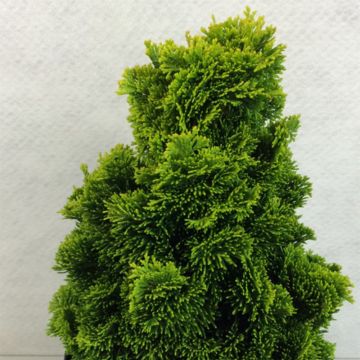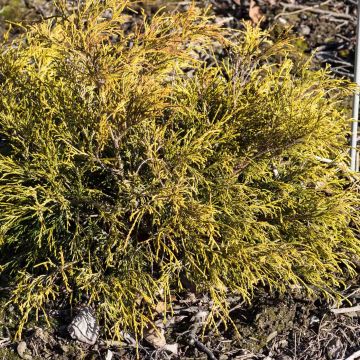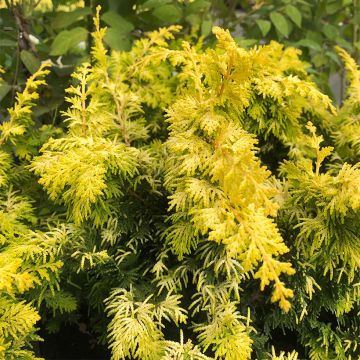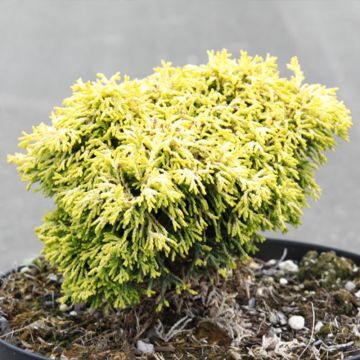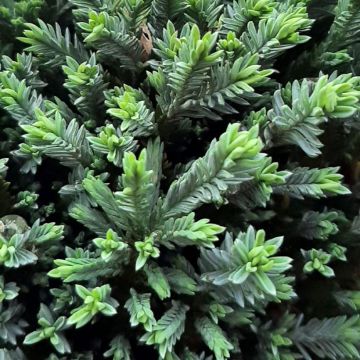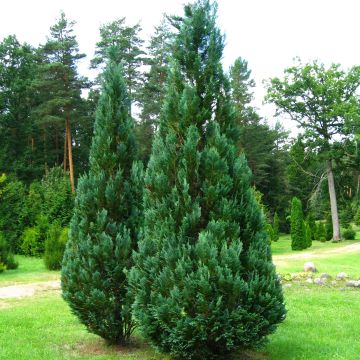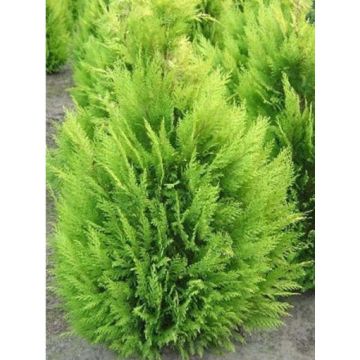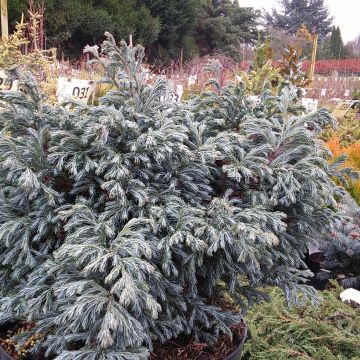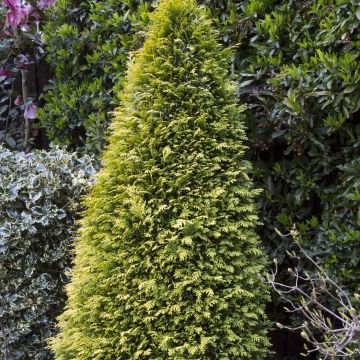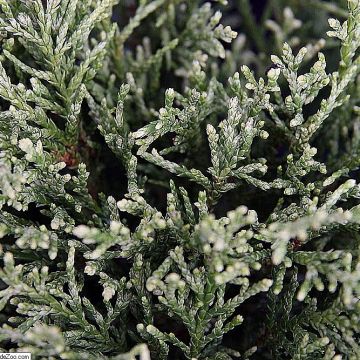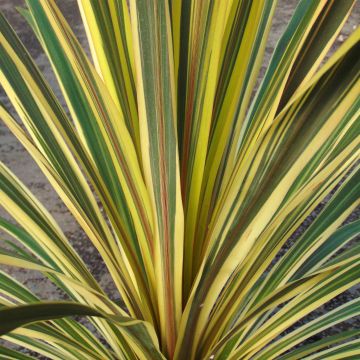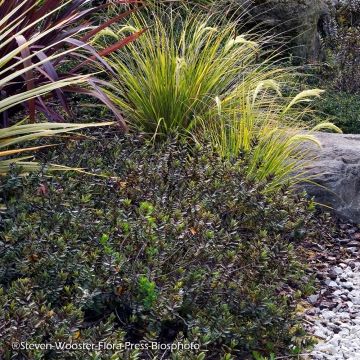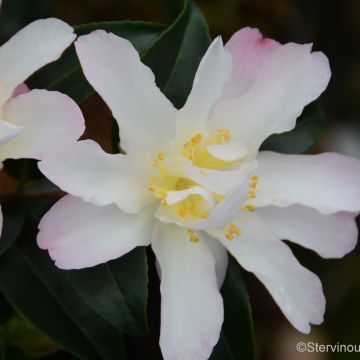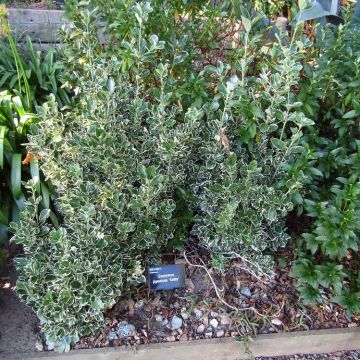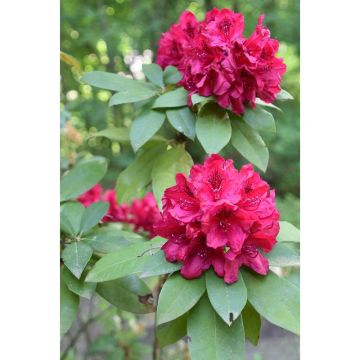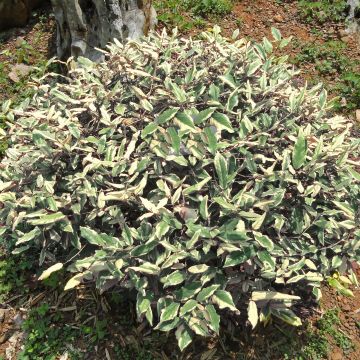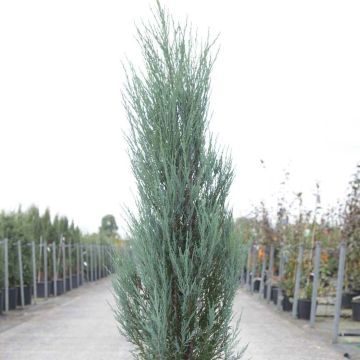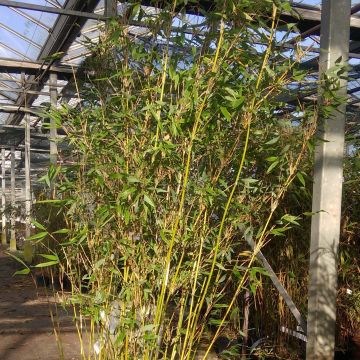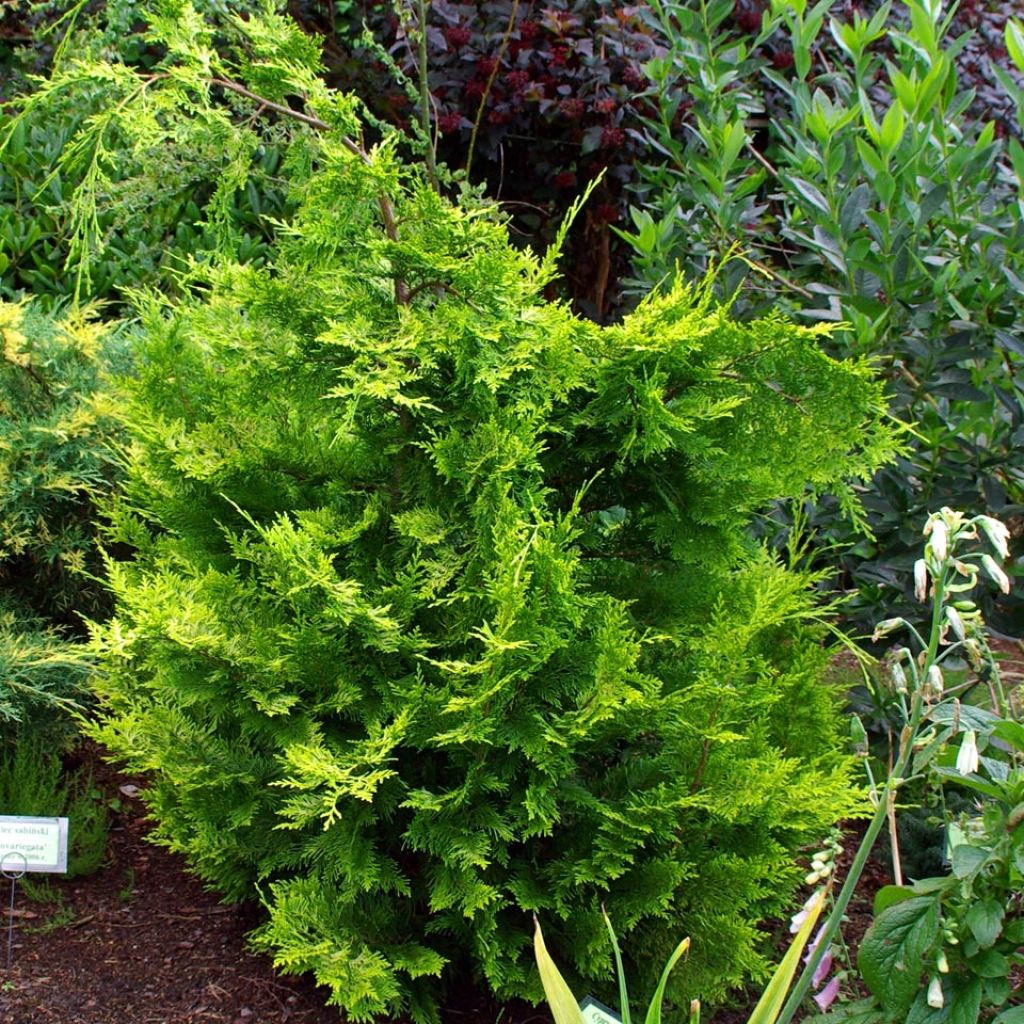

Chamaecyparis lawsoniana Ivonne - Lawsons Cypress
Chamaecyparis lawsoniana Ivonne - Lawsons Cypress
Chamaecyparis lawsoniana Ivonne
Lawson's Cypress, False Cypress, Port Orford-cedar, Oregon cedar, White cedar
This item cannot be shipped to the selected country
Delivery charge from €5.90
More information
Schedule delivery date,
and select date in basket
This plant carries a 24 months recovery warranty
More information
We guarantee the quality of our plants for a full growing cycle, and will replace at our expense any plant that fails to recover under normal climatic and planting conditions.
From €5.90 for pickup delivery and €6.90 for home delivery
Express home delivery from €8.90.
Does this plant fit my garden?
Set up your Plantfit profile →
Description
The Chamaecyparis lawsoniana 'Ivonne' is one of the most colourful varieties of conifers with its very intense lemon yellow evergreen foliage. This highly ornamental tree has a conical, compact habit with upright branches, making it ideal for creating beautiful privacy hedges that are resistant to sea spray, pollution, and cold weather. With slow growth, it requires little pruning. Its moderate development also makes it suitable for individual planting, even in smaller spaces. This low-maintenance plant will thrive in sheltered locations with cool, fertile, deep, and well-drained soil.
The Lawson Cypress, sometimes called false cypress, is a majestic conifer of the Cupressaceae family native to the moist coastal forests of the northwest United States. In its natural environment, it often reaches heights exceeding 30m (98.4ft) with a trunk diameter approaching 1m (3.3ft). It has an upright, conical habit, and its pendulous branches form soft curtains adorned with fairly dark, bluish-green foliage. It has given rise to numerous cultivars, including a wide range of plants with more modest stature, better suited to the size of our gardens.
The 'Ivonne' variety is a very beautiful form of this species that will not exceed 5m (16.4ft) in height and 2m (6.6ft) in width. From a young age, it exhibits a conical habit that is slender, narrow and very dense, supported by upright branches emerging from the base of the trunk. Its slender and flattened branches are densely covered with lemon-yellow scale-like leaves that turn slightly green during summer heat and on shaded parts of the foliage.
The Chamaecyparis lawsonia 'Ivonne' can be used as a hedge, as a specimen, or planted in a grove in a medium to small garden. It does not require pruning, but can tolerate light pruning. With a strong presence and a distinct personality, it is quite challenging to associate with other large shrubs, but it works well as a neutral-coloured screen at the back of shrub or perennial beds. The architectural qualities of conifers deserve to be more frequently used in our gardens, where they provide permanent structure. These plants are discreet in summer but assert themselves in winter when other flowers have deserted our gardens.
Report an error about the product description
Plant habit
Flowering
Foliage
Botanical data
Chamaecyparis
lawsoniana
Ivonne
Cupressaceae
Lawson's Cypress, False Cypress, Port Orford-cedar, Oregon cedar, White cedar
Cultivar or hybrid
Other Chamaecyparis
Planting and care
The Chamaecyparis lawsoniana 'Ivonne' is planted in spring or autumn in a light fertile soil, rich in humus, sandy, slightly acidic, neutral or slightly chalky. This conifer thrives in the sun (in a fairly humid climate) or in partial shade. Water the plants regularly during the months following planting. This conifer is not too demanding of soil quality, but it suffers in dry soils and climates. It is a species of cool, oceanic or mountain climates. This tree does not require pruning, but it can tolerate it if kept light: shorten the young branchlets without going back to the old wood.
Planting period
Intended location
Care
This item has not been reviewed yet - be the first to leave a review about it.
Evergreen shrubs
Haven't found what you were looking for?
Hardiness is the lowest winter temperature a plant can endure without suffering serious damage or even dying. However, hardiness is affected by location (a sheltered area, such as a patio), protection (winter cover) and soil type (hardiness is improved by well-drained soil).

Photo Sharing Terms & Conditions
In order to encourage gardeners to interact and share their experiences, Promesse de fleurs offers various media enabling content to be uploaded onto its Site - in particular via the ‘Photo sharing’ module.
The User agrees to refrain from:
- Posting any content that is illegal, prejudicial, insulting, racist, inciteful to hatred, revisionist, contrary to public decency, that infringes on privacy or on the privacy rights of third parties, in particular the publicity rights of persons and goods, intellectual property rights, or the right to privacy.
- Submitting content on behalf of a third party;
- Impersonate the identity of a third party and/or publish any personal information about a third party;
In general, the User undertakes to refrain from any unethical behaviour.
All Content (in particular text, comments, files, images, photos, videos, creative works, etc.), which may be subject to property or intellectual property rights, image or other private rights, shall remain the property of the User, subject to the limited rights granted by the terms of the licence granted by Promesse de fleurs as stated below. Users are at liberty to publish or not to publish such Content on the Site, notably via the ‘Photo Sharing’ facility, and accept that this Content shall be made public and freely accessible, notably on the Internet.
Users further acknowledge, undertake to have ,and guarantee that they hold all necessary rights and permissions to publish such material on the Site, in particular with regard to the legislation in force pertaining to any privacy, property, intellectual property, image, or contractual rights, or rights of any other nature. By publishing such Content on the Site, Users acknowledge accepting full liability as publishers of the Content within the meaning of the law, and grant Promesse de fleurs, free of charge, an inclusive, worldwide licence for the said Content for the entire duration of its publication, including all reproduction, representation, up/downloading, displaying, performing, transmission, and storage rights.
Users also grant permission for their name to be linked to the Content and accept that this link may not always be made available.
By engaging in posting material, Users consent to their Content becoming automatically accessible on the Internet, in particular on other sites and/or blogs and/or web pages of the Promesse de fleurs site, including in particular social pages and the Promesse de fleurs catalogue.
Users may secure the removal of entrusted content free of charge by issuing a simple request via our contact form.
The flowering period indicated on our website applies to countries and regions located in USDA zone 8 (France, the United Kingdom, Ireland, the Netherlands, etc.)
It will vary according to where you live:
- In zones 9 to 10 (Italy, Spain, Greece, etc.), flowering will occur about 2 to 4 weeks earlier.
- In zones 6 to 7 (Germany, Poland, Slovenia, and lower mountainous regions), flowering will be delayed by 2 to 3 weeks.
- In zone 5 (Central Europe, Scandinavia), blooming will be delayed by 3 to 5 weeks.
In temperate climates, pruning of spring-flowering shrubs (forsythia, spireas, etc.) should be done just after flowering.
Pruning of summer-flowering shrubs (Indian Lilac, Perovskia, etc.) can be done in winter or spring.
In cold regions as well as with frost-sensitive plants, avoid pruning too early when severe frosts may still occur.
The planting period indicated on our website applies to countries and regions located in USDA zone 8 (France, United Kingdom, Ireland, Netherlands).
It will vary according to where you live:
- In Mediterranean zones (Marseille, Madrid, Milan, etc.), autumn and winter are the best planting periods.
- In continental zones (Strasbourg, Munich, Vienna, etc.), delay planting by 2 to 3 weeks in spring and bring it forward by 2 to 4 weeks in autumn.
- In mountainous regions (the Alps, Pyrenees, Carpathians, etc.), it is best to plant in late spring (May-June) or late summer (August-September).
The harvesting period indicated on our website applies to countries and regions in USDA zone 8 (France, England, Ireland, the Netherlands).
In colder areas (Scandinavia, Poland, Austria...) fruit and vegetable harvests are likely to be delayed by 3-4 weeks.
In warmer areas (Italy, Spain, Greece, etc.), harvesting will probably take place earlier, depending on weather conditions.
The sowing periods indicated on our website apply to countries and regions within USDA Zone 8 (France, UK, Ireland, Netherlands).
In colder areas (Scandinavia, Poland, Austria...), delay any outdoor sowing by 3-4 weeks, or sow under glass.
In warmer climes (Italy, Spain, Greece, etc.), bring outdoor sowing forward by a few weeks.

































